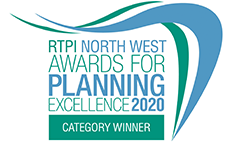Marton Estate is an 11 hectare Site situated in the Fylde-Blackpool periphery strategic location for development, which was identified in the Local Plan. The Site was allocated for mixed use development to fulfil growth objectives for the Borough. Outline planning permission had previously been granted on the Site for the development of 265 dwellings and 1.5 hectares of employment use, however development did not come forward and the permission expired before a Reserved Matters Application was submitted. Homes England subsequently acquired part of the site to help deliver much needed housing development in Fylde.







